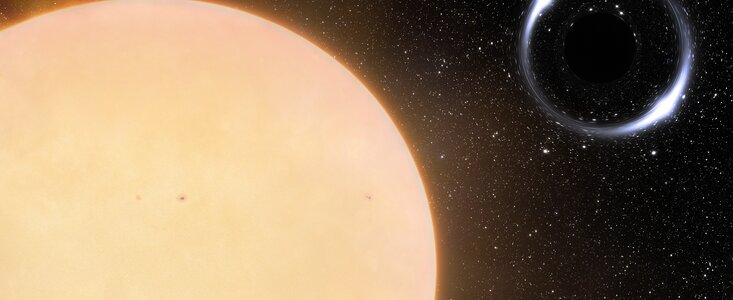Report by Swasti Sharma
Black holes are objects that absorb light and energy. Nothing escapes them. We do not know what happens inside a Black Hole, since no signal, light, or energy ever exits a Black Hole.
Supermassive black holes (having size million or billion times more than the Sun) are mostly found in the centre of large galaxies. The black holes which are formed due to gravitational collapse of stars are referred to as Stellar- mass black holes. They weigh approximately 5- 100 times the mass of the Sun and are more common. In the Milky way alone, there are 100 million black holes of such type.
Astronomers using the International Gemini Observatory which is operated by NSF’s NOIRLab ((National Optical-Infrared Astronomy Research Laboratory), have discovered the closest-known black hole to the Earth.
It falls in the category of Stellar- mass black holes and the researchers have named it Gaia BH1.
They named it so because the data they analysed was fetched with the help of a European Space Agency’s Gaia spacecraft.
Gaia BH1 is 1600 light years away from Earth.
This black hole is dormant (which means it is not active).
In a wider sense, a dormant black hole means they do not shine in X- rays and don’t consume the material from a nearby stellar companion. It lies in the constellation Ophiuchus whereas the black hole which was considered as the nearest one before Gaia BH1′ s discovery lies in the Monoceros constellation.
According to the researchers, this discovery was possible due to a Sun-like star that orbits this black hole.
There are millions of stellar-mass black holes in the Milky Way Galaxy, but the few that have been detected were discovered only because of their energetic interactions with a companion star. As material from a nearby star enters toward the black hole, it becomes superheated and generates powerful X-rays and jets of material. If a black hole is not actively working (it is dormant) it simply blends in with its surroundings.
Image Credit: NOIR Labs

